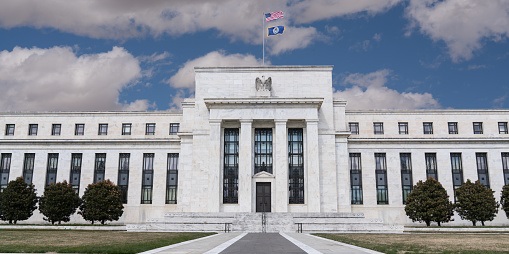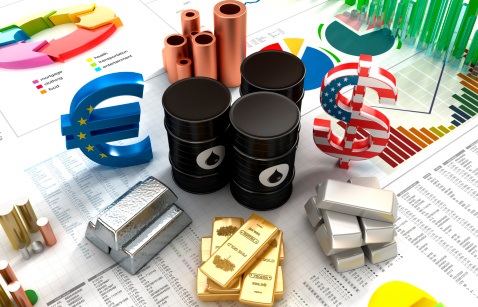The constructive mood in global equity markets has carried across into Tuesday trade. As a recap of yesterday’s US session; stocks were buoyed across the board, with the S&P 500 cash index rising over 1.0% and closing just below the 4200 level, whilst the Nasdaq 100 saw gains of about 1.7% – traders cited a subdued yield environment, US data (a softer than expected US national activity indicator reading) and dovish Fed speak (more reiterations from Fed member that the bank expects the current spike in inflation to be transitory) as supportive to risk appetite at the time. As noted, the positive tone has carried through to Tuesday trade; Asia Pacific equities were broadly higher and European stocks are higher this morning, with the DAX hitting record levels, with the region also deriving some support from a decent German Ifo survey result for the month of May. Major US equity index futures are up by 0.2-0.4% this morning (E-mini S&P 500 futures are now above 4200), with tech still the outperforming sector (as indicated by Nasdaq 100 future outperformance) as US government bond yields continue to drop in pre-US market trade; 10-year yields have this morning fallen back below the 1.60% mark, supressed as FOMC members continue to push back on expectations for an imminent shift towards a tapering of the bank’s asset purchase programme. Another factor likely to be contributing to the improved sentiment in global equity markets is the fact that crypto currencies has recovered from recent lows; however, after yesterday’s 12% recovery, Bitcoin is down just over 4.0% this morning. If crypto markets continue to crater (Bitcoin remains about 42% below its all-time April high), this could again weigh on equities, thus price action in crypto markets is worth keeping an eye on.
Elsewhere, turning to commodity markets; crude oil prices are a little lower this morning and failing to derive much of a boost from the buoyant atmosphere in global equity markets. For the time being, WTI seems content to swing either side of the $66.00 level, only about $2.0 below recent cycle highs set back in early March. There have been a few negative reports about OPEC+ compliance that might be weighing modestly on the complex; 10 of OPEC+’s overproducers/poor compliers are yet to submit updated plans about compensation cuts for their recent overproduction, overproduction which has reportedly amounted to 3.679M barrels per day over the last 12 months. Meanwhile, US/Iran negotiations are set to resume this afternoon, with mixed commentary from US and Iranian politicians about whether a deal has been reached; the Iranian President said last week that the US is prepared to lift sanctions, but the US Secretary of State pushed back on the notion that a deal is close over the weekend, saying Iran had not yet made the necessary commitments for sanctions to be rolled back. But consensus amongst analysts appears to have concluded that, thanks to surging demand in fast-vaccine rollout nations (US, Canada, UK, EU etc.), the market out to be able to absorb additional Iranian supply, hence why prices remain supported close to recent highs.
In terms of industrial metals, LME copper prices are holding in the $10K per tonne region and Chinese iron ore prices rose a little overnight, after managing to hold above the CNY 1K mark. There has been further jawboning from Chinese officials regarding their crackdown on rising commodity prices and excessive speculation overnight. Chinese Premier Li talked about solutions to tackle the recent price rise and reiterated recent remarks from other officials about how the country will stabilise prices and fight commodity hoarding. The impact of this jawboning appears to be wearing off; “although some of the rises in commodity prices has been driven by speculators, there is also a genuine increase in demand as the global economy reopens… so many think (China’s) measures to clamp down on speculators may not be enough to ease the price pressure” commented, Rodrigo Catril, a senior FX strategist at National Australia Bank. However, “increased commodity futures market oversight by Chinese government agencies should keep a lid on further speculative rallies for the time being” countered Atilla Widnell, managing director at Navigate Commodities.
Finally, spot gold is comfortably holding onto recent gains as it trades in the $1880s, with bulls looking for a breach of recent resistance around $1890 for confirmation that a test of the psychologically important $1900 level is next. The precious metal remains supported by a combination of 1) continued weakness in the US dollar, 2) the aforementioned subdued US bond yield environment, 3) still elevated inflation expectations and weakness in crypto markets (crypto assets allegedly compete with gold as alternative inflation hedges). The former two factors (weakness in USD and yields) seem likely to remain the case for the foreseeable future so long as the Fed maintains its current dovish stance/policy guidance and does not pivot towards tapering too soon.
Turning to FX; as mentioned, the US dollar continues to struggle. The US dollar index is again down this morning (by about 0.2%) and has fallen below the February low in the 89.60s. The annual low around 89.20 is the only significant area of technical support now until multi-year lows (set back in early 2018) of just above 88.00. Similar to the analysts above with gold; a subdued US yield environment and elevated inflation expectations combined with the ongoing dovish message from FOMC members continues to weigh on the currency. Ahead of Core PCE data (the Fed’s favoured inflation gauge) on Friday for the month of April, which could turn a few heads if it comes in really hot (like CPI and PPI did earlier in the month), USD traders must navigate past a barrage of further Fed speak, which is likely to remain dovish and keep risks for the dollar tilted to the downside.
In terms of other currencies, SEK is the best performer in the G10, up by about 0.5% on the day, while EUR is the doing the next best, up by close to 0.3%, enough to EURUSD to the 1.2250 region, a clean break of recent highs around 1.2200. The aforementioned strong German Ifo report for the month of May seems to have helped sentiment remain elevated towards the euro relative to most of its other G10 peers; for reference, the Business Climate index came in a little stronger than forecast and rose to 99.2 from 96.6 last month and the Expectations index jumped to 102.9 from 99.2, also a beat on expected – the data feeds into the narrative of a rapidly recovering German (& Eurozone) economy as the bloc’s vaccine rollout catches up with the UK and US and lockdowns are eased. Rising raw material prices was cited as a concern, but inflation concerns in the Eurozone have not been as much of a big thing as in the US (no one really believes that the Eurozone is headed for sustained high inflation any time soon).
NZD, CHF and AUD are the next best performers, up between 0.1-0.2% on the day versus the softer US dollar, lifting NZDUSD back towards the mid-0.7300s, AUDUSD back above 0.7750 and pushing USDCHF below 0.8950. The Aussie was not particularly reactive to updates from the Australian Bureau of Statistics, which reported a preliminary trade surplus of AUD 10.1B in April. Moreover, the agency reported that the change in weekly payrolls for the 24th of April to 8th May period were down by 0.5%, with a 1.3% decline in wages – some weakness was expected in wake of the ending of the government wage subsidy scheme at the end of March, and the labour market weakness does not seem to have been as bad as feared.
GBP, CAD and NOK are flat on the day versus the dollar, the latter two seemingly weighed by weakness in crude oil prices; GBPUSD has slipped back from a brief test of the 1.4200 level and currently trades in the mid-1.4100s and USDCAD seems reluctant to test 1.2000 to the downside just yet. Finally, amid the favourable risk appetite, JPY is the worst performing G10 currency, down about 0.1% on the day versus the dollar, with USDJPY rising back from session lows in the 108.50s in recent trade to trade just under 109.00. One further notable mover has been the yuan; USDCNH, the offshore yuan that is not directly manipulated by the PBoC, has pushed below the key 6.40 level during overnight trade to hit fresh three-year lows. There were some reports of buying from Chinese banks at this level to ease downside pressure on the pair, but the USDCNH continues to trade just under the 6.40 level.
The Day Ahead
US Case-Shiller House Price data for the month of March is out at 1400BST, followed by preliminary US Conference Board Consumer Confidence data for the month of May out at 1500BST, at which time the May Richmond Fed manufacturing survey and April New Home Sales will also be released. Sentiment is likely to derive some direction from this data but is likely to remain supported (and USD subdued) as long as Fed speakers stick to the recent dovish tone; Fed’s Barkin is one of the hawkish exceptions and may reiterate calls for pivoting towards tapering the Fed’s bond buying when he speaks from 1300BST. Fed’s Quarles is likely to remain dovish and stick to the script when he speaks to the Senate Banking Committee at 1500BST. Outside of the US, euro traders will be watching a speech from ECB Chief Economist Philip Lane at 1500BST. So a fairly busy session, all in all, but there is unlikely to be anything that drastically changes to macro-narrative.




